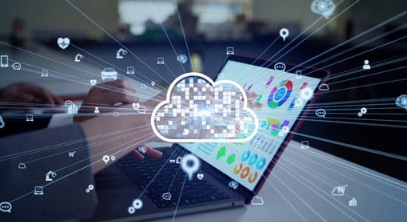
Blog
Licensing Models for Software Products: A Complete Guide for Businesses

Choosing the right software licensing model is one of the most important decisions for both developers and businesses. It impacts how your product is monetized, distributed, maintained, and legally protected.
In this blog, we’ll explore the most common licensing models for software products, including their pros, cons, and ideal use cases—helping you select the right model for your business goals.
What is a Software Licensing Model?
A software licensing model defines how your product can be used, shared, and monetized. It sets the legal boundaries for:
Who can use the software
How long they can use it
What rights the user has (e.g., modify, resell, redistribute)
How you, as the developer or vendor, get paid
Why Licensing Matters in Software Development
✅ Protects your intellectual property
✅ Establishes usage rights and restrictions
✅ Defines revenue streams (one-time, recurring, freemium, etc.)
✅ Helps maintain compliance and legal clarity
✅ Influences customer experience and retention
Top Licensing Models for Software Products
1. Perpetual License
A one-time purchase model where the customer pays upfront and owns the license forever.
💡 Best For:
On-premise enterprise software
Companies with long-term use cases
✅ Pros:
High upfront revenue
No recurring billing needed
❌ Cons:
Limited recurring cash flow
Challenging to monetize future upgrades
2. Subscription License (SaaS Model)
Customers pay a recurring fee (monthly, yearly) to access the software.
💡 Best For:
Cloud-based products
SaaS applications
✅ Pros:
Predictable revenue stream
Easier to roll out updates and support
❌ Cons:
Higher churn risk
Requires continuous product improvement and engagement
🧮 Stat: According to Gartner, subscription-based licensing is projected to account for over 80% of software revenue by 2025.
3. Freemium Model
Offers a free version with limited features and encourages users to upgrade to a paid plan.
💡 Best For:
Products that benefit from mass adoption
Tools with clear feature upgrade paths
✅ Pros:
Low barrier to entry
Drives organic growth and product-led acquisition
❌ Cons:
High support costs for free users
Monetization can be challenging without compelling premium features
4. Open Source License
Source code is freely available, often under licenses like MIT, Apache, or GPL. Monetization may come from support services, hosted versions, or dual licensing.
💡 Best For:
Developer tools
Community-driven platforms
✅ Pros:
Encourages collaboration and adoption
Can accelerate innovation and community growth
❌ Cons:
Difficult to monetize directly
Risk of code forks or misuse if not governed properly
🔍 Popular Licenses: MIT (permissive), GPL (restrictive), Apache 2.0 (enterprise-friendly)
5. Usage-Based Licensing
Pricing is based on how much the user consumes (e.g., API calls, data storage, seats).
💡 Best For:
Infrastructure tools (e.g., AWS, Twilio)
High-volume services
✅ Pros:
Scales with customer success
Transparent cost alignment
❌ Cons:
Unpredictable billing for users
Complex metering and analytics required
6. Concurrent User Licensing
Allows a set number of users to use the software at the same time, regardless of how many total accounts exist.
💡 Best For:
Shared enterprise environments
Internal systems with rotating staff
✅ Pros:
Cost-effective for large teams
Encourages adoption
❌ Cons:
Can be gamed or overused
Requires session monitoring
7. Floating License (Network Licensing)
A license is installed on a server and shared across a network by multiple users (usually limited by active sessions).
💡 Best For:
Engineering or CAD software
On-premise corporate environments
✅ Pros:
Flexible usage across teams
Centralized management
❌ Cons:
Higher setup complexity
Network dependency for license validation
Choosing the Right Licensing Model: Key Considerations
When selecting a licensing model for your software, ask:
How do your users prefer to pay?
Subscription vs. one-time vs. usage-based?
What’s your business model?
Recurring revenue vs. transactional sales?
How often will you update the software?
Frequent updates work better with SaaS models.
Who is your target audience?
Enterprise vs. startup vs. individual developers?
Do you plan to open source part of the product?
Consider dual licensing or open core models.
🛠 Tip: You can also combine models (e.g., freemium + subscription or open source + commercial support).
Common Mistakes to Avoid
❌ Choosing a model that conflicts with customer expectations
❌ Not accounting for long-term monetization needs
❌ Ignoring license compliance and legal advice
❌ Making license terms too vague or restrictive
Final Thoughts: Licensing is a Growth Lever
Your licensing model isn't just legal—it’s strategic. The right model can improve customer experience, boost revenue, streamline operations, and protect your software from misuse.
Whether you’re launching a new product or revisiting an existing one, make licensing a core part of your business strategy—not an afterthought.
FAQs: Software Licensing Models
1. Can I switch licensing models after launch?
Yes, but it requires clear communication and may impact existing users. A phased rollout or grandfathering current users can help ease transitions.
2. Is open source licensing right for commercial use?
Yes, many companies use open source with commercial add-ons, managed services, or dual licensing for monetization.
3. What’s the difference between a license and a subscription?
A license grants permission to use the software (perpetual or timed), while a subscription typically includes access plus ongoing updates and support.
Need Help Choosing the Right Licensing Model?
Whether you're developing a SaaS, a downloadable app, or an open source platform, we can help you choose a licensing strategy that fits your product and business goals.
📩 Let’s talk licensing and monetization—reach out today with WWW.CODRIVEIT.COM





